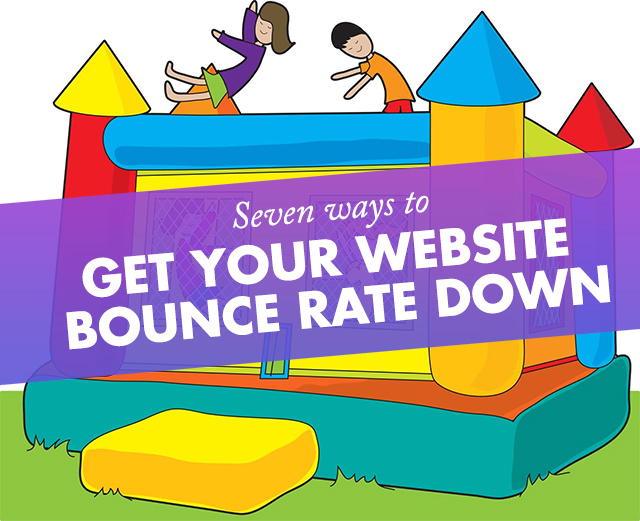
7 Ways to Get Your Website Bounce Rate Down and Why You Must Take Action
This post was contributed by Tomer Harel.

In the online world, the bounce rate is the percentage of users who visit a site and exit before clicking anything. There could be many reasons for the bounce: load time is too slow, pop-ups are too annoying, the call-to-action was obscure, or they simply couldn’t easily find what they were looking for.
Whatever the reason, the result is the same: a lost visitor who didn’t convert, likely left with a bad impression of the brand, and quite possibly hurt the site’s search engine ranking.
Luckily, there are 7 proven ways to decrease a site’s bounce rate:
1. Remove pop-ups
Remove all of them. Even the well-designed ones. Even the ones that are advertising internal content offers. Visitors hate pop-ups of all kinds and happily bounce off sites that have them.
2. Use landing pages
When running campaigns for specific offers or to specific targets, use landing pages that are optimized for the campaign. Use the same messaging in the campaign’s ads, posts, and emails as you use on your landing page. If you run a supermarket and advertise “got milk?” the linked page had better be about milk. If it is about steak or vegetables, the bounce rate will increase.
3. Optimize Calls-to-Action
Make calls-to-action easy to find and enticing to click. CTA buttons should stand out on the page. Test variations of buttons with contrasting colors and sizes. Word the CTA text as actionable and inviting; instead of a boring “Free Trial” button, test wording like “Test it out for Free” or “Start My Free Trial.” Position CTA buttons logically and strategically above the fold.
4. Promote relevant content
On pages targeting a specific industry, for example, promote content that is relevant to that industry. For example, if you sell office furniture and have a specific page with information about furniture for medical offices, offer links to other articles, videos, and product information just for medical personnel. Offer the kind of content that the target visitor wants to consume, and they will most likely convert into a lead instead of bouncing.
5. Be searchable
Including a search box encourages users to stay on the site even if they didn’t find exactly what they were looking for on their first page. Google Custom Search offers a free, effective tool. It’s used on Just Creative.
6. Be quick
Load times are very important and must be optimized to be as low as possible. Reduce image sizes, cache any information that bottlenecks performance, remove any broken links, reduce file sizes when possible, use clean CSS, and ensure server speeds are optimized.
7. Offer responsive design
Increasingly, websites are accessed on mobile devices. Ensure that the site’s design and navigation are responsive and optimized for all screen sizes and browsers to avoid mobile bounces.
8. Give users what they want
The main reason for a website to have high bounce rate has to do with the fact the users were expecting to find something else when they arrived on the site. The most effective way to avoid this is to make sure the homepage or landing page is optimized for the user intent, or, in other words, the correct search terms.
Bounce rates down; success rates up!
By using these tips to reduce a website’s bounce rate, several great things are bound to happen:
- More visitors consume the site’s content
- Brand recognition improves
- Conversion rates increase
- Search engine rankings improve
- Sales surge
- Customer satisfaction rises
As always, remember to A/B test every change made to a website to determine its success. For changes like these bounce rate reducers, heatmaps and mouse tracking may also be helpful. But, in general, these seven tips are sure-fire winners.
Tomer Harel is Founder and CEO of KeyScouts, and Co-Founder of Spectoos.com. He has been practicing Internet marketing for over a decade, helping hundreds of businesses to thrive online. Despite his extensive knowledge and years of hands-on experience, Tomer is always looking to learn more and be a little bit better every day at what he does.
